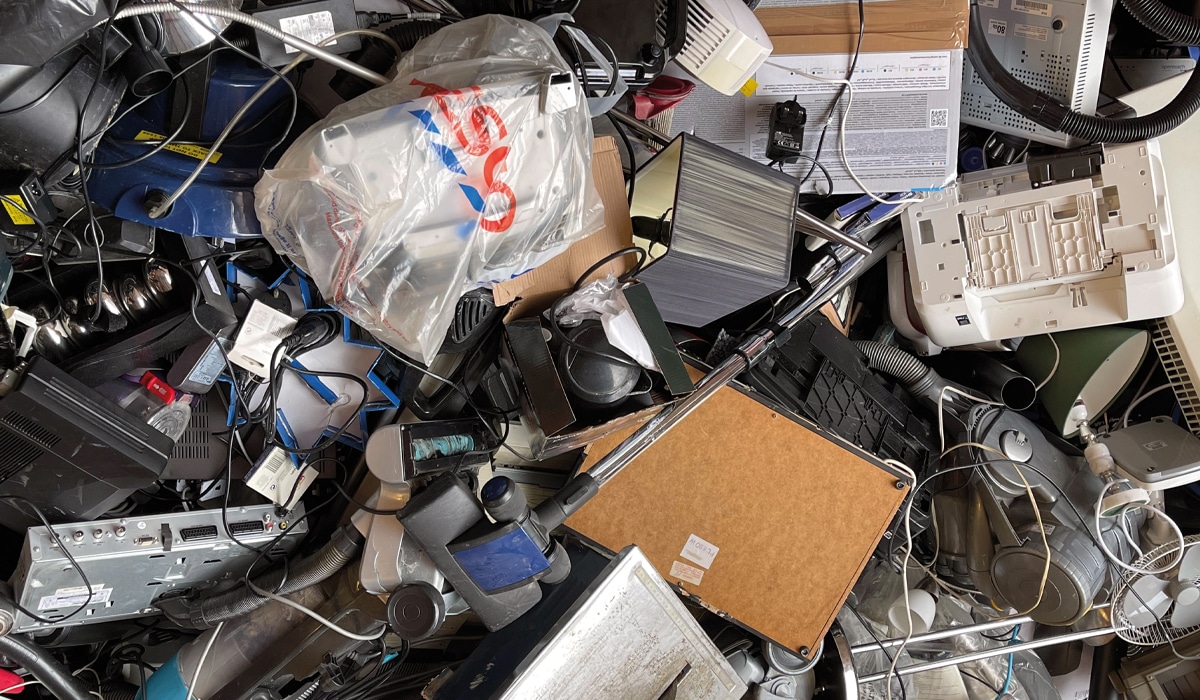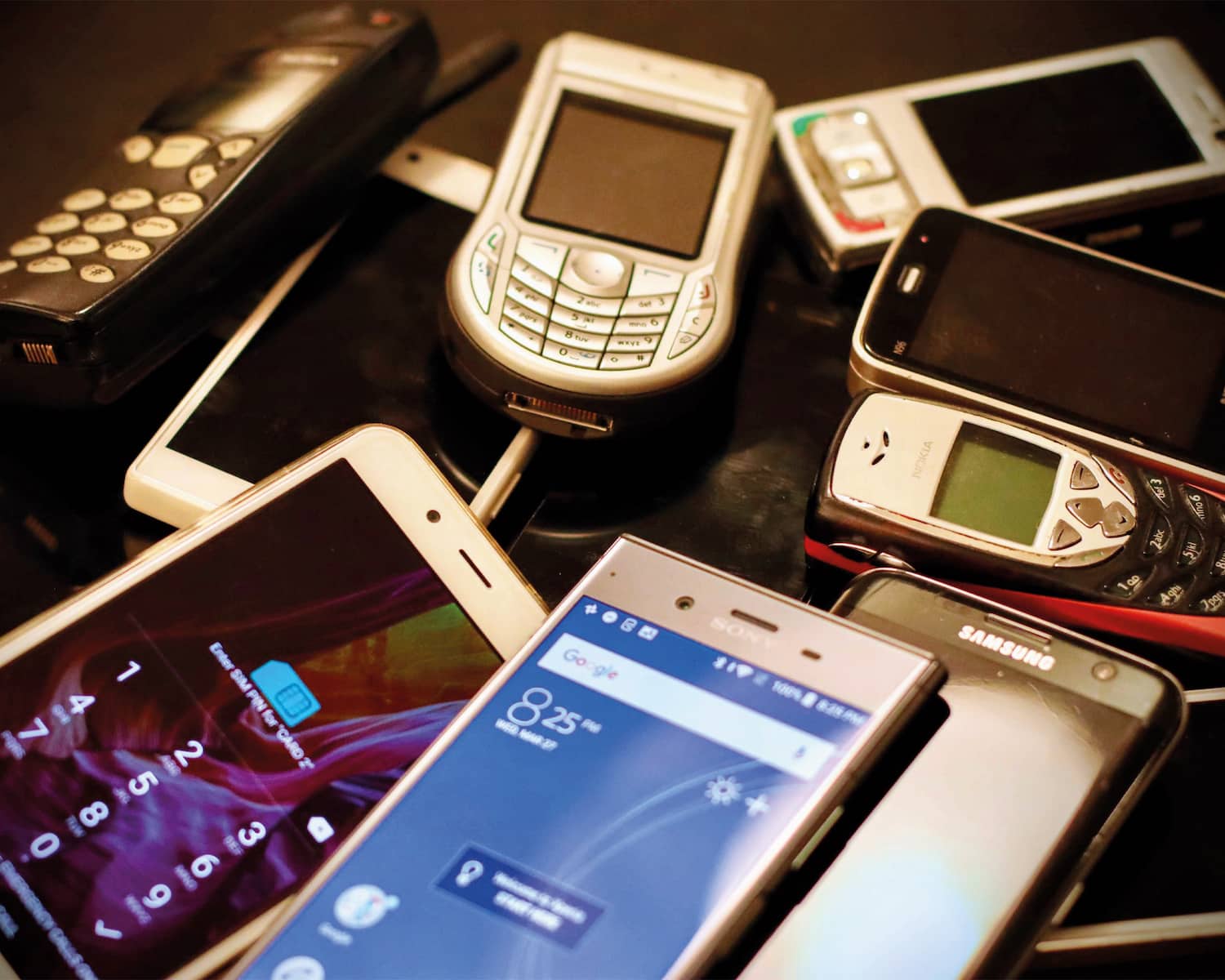We can create less harmful electronic waste by changing our relationship with our old tech
We all have that one cupboard in our house. It’s the one filled with a tangled box of old phone chargers, grimy headphones with only one working earbud, an unused printer and some old push-button cellphones. We always intended fixing the broken items and donating the working stuff to someone who needs them, but we never do.
And herein lies the problem. All of these items make up electronic trash, or e-waste. Sure, they’re not lying in a landfill somewhere, causing harm to people and poisoning the environment, but they’re still going to waste.
In 2021, the worldwide mountain of e-waste was estimated at around 57.4 million tons, according to the Waste Electronic and Electrical Equipment (WEEE) forum. This is greater than the weight of the Great Wall of China.
Our e-waste problem is driven by a so-called linear economy: We dig up raw materials, turn them into products and then throw the products away when we’re done with them. We need to be moving towards a so-called circular economy where we recapture this ‘waste’ and use it to make new materials and new products. Experts believe that this will reduce the amount of e-waste we produce, and it will also stimulate innovation and drive new business opportunities and employment.
When talking about waste, we’ve all heard ‘reduce, reuse, recycle.’ In embracing a circular economy, we need to focus on the ‘reuse’ part so that we can keep items in use for as long as possible. In this way, the three Rs become repair, refurbish, recirculate.
Rubbish relationship
This requires that we rethink our relationship with our old devices and shift our thinking around what we do with our unused tech. You must remember, says Keith Anderson, CEO at e-Waste Association of South Africa (eWASA), that recycling is actually the last step in a circular economy.
‘Many of the devices and technologies that we have stored away are still functional and if not, they can be fixed. So rather than just dropping these off to be recycled, we need to embrace ways to reuse these items.’
This is a particularly appealing strategy in South Africa where the great divisions between rich and poor means that one person’s old iPhone could be another person’s first smartphone. This concept suggests that we should only take a product to be recycled responsibly once it stops working entirely.
Does this mean we should resist replacing our phone every year or two? In short, yes.
‘OUR E-WASTE PROBLEM IS DRIVEN BY A SO-CALLED LINEAR ECONOMY: WE DIG UP RAW MATERIALS, TURN THEM INTO PRODUCTS AND THEN THROW THE PRODUCTS AWAY’
The big tech brands bring new products to market every year, and tech enthusiasts seem to have an insatiable appetite to buy the latest gadgets, quickly throwing out their old devices in favour of more trendy ones. This ritual of regularly upgrading our tech when something new comes along has a huge environmental impact, and produces tons of unnecessary waste.
According to carbon footprint guru Mike Berners-Lee (the brother of Sir Tim Berners-Lee who invented the World Wide Web and the web browser) there were 7.7 billion mobile phones in use in 2020. These devices created about 1% of worldwide carbon emissions (that’s 580 million tons of CO2 emissions in 2020), and about 80% of that happened in shipping before anyone even started using the phone.
While 1% might not sound like much, the phone is just one tech category. We need to add some bigger devices like PCs and laptops, TVs, headphones and speakers, and then all the other electronic household appliances.
‘MAKING IT EASY TO DROP OFF OLD TECH AT SCHOOLS OR MALLS MAY INCREASE PARTICIPATION.’
SA E-Waste laws
To address this issue, the South African government has rolled out its Extended Producer Responsibility (EPR) policy. EPR requires manufacturers to take responsibility for the full life cycle of the products they sell, all the way through to e-waste disposal. Before EPR, the cost of e-waste disposal was placed squarely on the public, but this is no longer the case.
With this new legislation coming into effect, the eWaste Alliance believes that there will be a major education drive, and effort will be made to raise awareness around what we should and shouldn’t be doing with the old tech. So, if you aren’t aware of the damage caused by throwing something like old batteries in your dustbin, you probably just don’t know any better.
But will e-waste education drive South African consumers to look at that old laptop a little differently?
E-waste dumping in Africa
For Africa, e-waste is a growing crisis. A major contributor to this problem is the dumping of old and broken electronic equipment from well-off countries into poor countries where there are few regulations for the safe disposal of e-waste. In these low-income countries, poor people sift through large dumpsites to recover valuable minerals, like copper, from the waste, often by burning the plastic housing of the electronics.
The Agbogbloshie dump site in Ghana is the largest e-waste dump in Africa, and one of the biggest in the world. It poses a grave risk to air quality and human health. Experts estimate that around 250 000 tons of electronic waste is dumped at Agbogbloshie every year.
E-waste is the fastest growing waste stream in South Africa. The average South African generates around 6.2 kg of e-waste annually. This means that South Africa produces around 360 000 tons of e-waste every year. Less than 12% of this is recycled.
Drive-by dumping
Maybe not. Recent research on the state of consumer e-waste recycling in SA suggests that we might need to offer something in exchange, like having people benefit from refurbishing and recycling schemes. Convenience is also a big factor. Making it easy to drop off old tech at convenient locations like schools, malls or petrol stations may also increase our participation in refurbishing and recycling programmes.
Fixing the growing e-waste problem is more complicated than encouraging consumers to buy less and recycle more. After all, there is an entire global economy that’s based on the linear ‘take-make-waste’ system, where natural resources are extracted, used and then simply tossed aside. This model is not only wasteful and impractical, but also unsustainable. Minimising our personal e-waste by using our gadgets and appliances for longer is just doing our part to save the planet.

Recycling your old tech
Almost all types of common electronics can be at least partially recycled, since they have many metal components. All of these items can be recycled.
HOUSEHOLD
Fridge, toaster, microwave, clothes iron, vacuum cleaner, lamps, clocks, torches, coffee machines, ovens, kettles, batteries, routers, washing machines, tumble dryers, blenders, air conditioners
OFFICE
Laptops, desktop computers, computer monitors, printers, scanners, copiers, keyboards, mice, cables, circuit boards, calculators, landline phones, answering machines, servers, switches
ENTERTAINMENT
Smartphones, tablets, TV, headphones, speakers, digital/ video cameras, radios, VCRs, DVD players, MP3 and CD players, electronic toys, e-bikes, e-scooters
Recirculate your old tech
Some South African cellphone stores give consumers the option AO to trade in old phones for cash or vouchers. Some will even accept broken phones and incomplete accessories for a lower price, and some will refurbish or repair, and pass them on to others.
Trade-ins:
iStore
Cellucity
Everyshop
Digicape
Incredible Connection
Repairs and refurbishing:
Dispose IT
WeFix
InnoVent
Words by Joanne Carew @LITTLECAREW
Photography: Pexels, Unsplash, Courtesy Images







